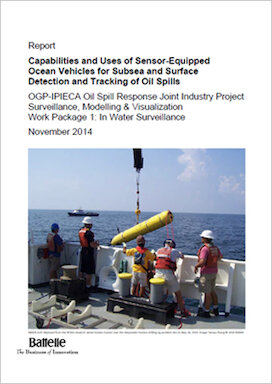This report evaluates a range of oil detection sensors and oceanographic vehicles and their overall compatibility for detecting and tracking oil in water. Oil detection sensors include in situ contact sensors that utilize either direct or indirect sensing methods and surface remote sensors that utilize either passive or active sensing methods. Oceanographic vehicles include autonomous underwater vehicles (AUVs), autonomous surface vehicles (ASVs), and manned surface vessels.
Capabilities and uses of sensor-equipped ocean vehicles for subsea and surface detection and tracking of oil spills

Related resources
- 11 February 2022
Ipieca and IOGP have launched a quick reference infographic and video for local responders to use when deciding whether to spray surface dispersant on oil spills.
- 17 July 2019
Ipieca has partnered with the United Nations Development Programme (UNDP) and the International Finance Corporation (IFC) to develop a shared understanding of the implications of the UN SDGs for the oil and gas industry and how the industry can most effectively contribute.
- 17 November 2017
A joint UNDP, IFC, Ipieca and ICMM side event summary
- 19 July 2017
Ipieca has partnered with the United Nations Development Programme (UNDP) and the International Finance Corporation (IFC) to develop a shared understanding of the implications of the UN SDGs for the oil and gas industry and how the industry can most effectively contribute.



